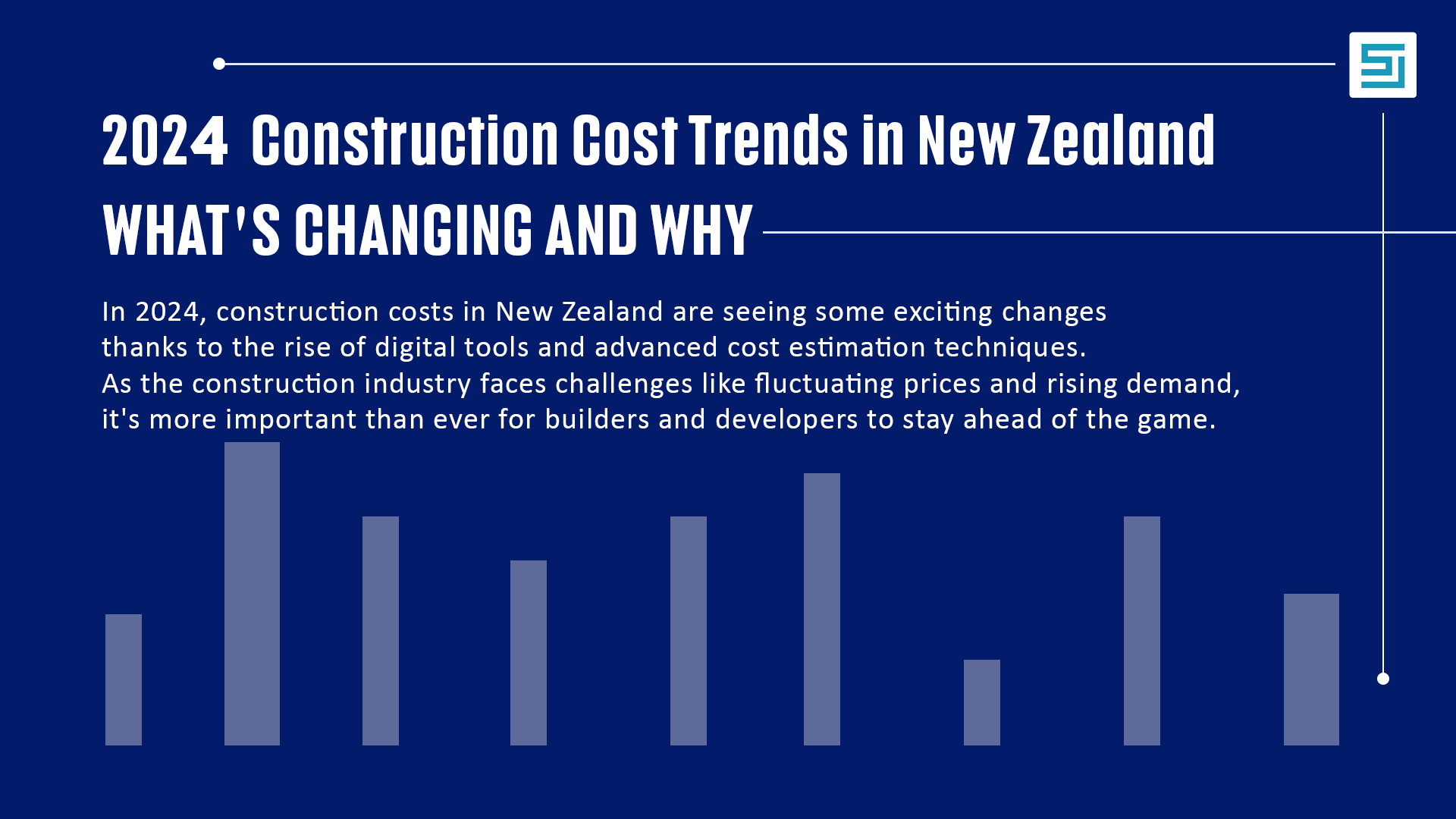The construction sector in New Zealand is experiencing major transformations in 2024. Digital technologies are taking a central role in cost estimation, assisting builders and developers in tackling issues such as rising material prices, labor shortages, and the push for sustainability. Let’s explore the trends influencing cost estimation, the challenges builders encounter, and the opportunities that lie ahead.
How Digital Tools Are Transforming Cost Estimation
- Real-Time Data Integration
Technologies such as Building Information Modeling (BIM) and sophisticated construction management software bring together real-time project information, simplifying cost predictions. These tools enable developers to monitor budgets in real-time, foresee potential overruns, and modify their plans proactively to prevent issues from growing. - Cloud-Based Collaboration
Cloud platforms allow various stakeholders—such as architects, contractors, and clients—to work together in real-time. This efficient communication keeps everyone informed with the latest cost information, enhancing the decision-making process. - AI-Driven Analytics
Artificial intelligence is revolutionizing cost estimation by examining previous projects to uncover opportunities for savings. It can predict possible challenges such as supply chain interruptions or workforce shortages, allowing for proactive measures to be taken.

Challenges in Cost Management
- Material Price Volatility
Construction material prices, such as steel and timber, vary because of global supply chain issues and inflation. Builders should consider including contingencies to account for these unpredictable factors. - Skilled Labor Shortages
New Zealand is experiencing a lack of skilled workers, which is leading to increased wages. This situation affects the total costs of projects, particularly for major commercial developments. - Regulatory Compliance
Tighter environmental and safety regulations can increase both complexity and expenses. It’s essential for builders to keep up with evolving laws to prevent any penalties or project delays.
Opportunities for Builders in New Zealand
- Embracing Sustainability
Although green building methods may come with a higher upfront cost, they provide significant savings over time. Using sustainable materials, designing for energy efficiency, and incorporating renewable energy sources can lower operating expenses and increase the overall value of the property. - Prefabrication and Modular Construction
These cutting-edge methods minimize waste, accelerate construction schedules, and decrease labor expenses. Prefabrication is especially effective in tackling the housing shortages in New Zealand. - Government Initiatives
Policies that encourage affordable housing and infrastructure growth create chances for builders to obtain contracts with stable cost frameworks.
Also Read: Estimating VS Forecasting: What’s the Difference in Construction?
2024 Construction Cost Trends in New Zealand
- Residential vs. Commercial Costs
Residential construction is experiencing a minor drop in costs as demand softens, while commercial projects are encountering rising expenses because of increased material prices. - Regional Focus
Construction activity continues to thrive in Auckland and Christchurch, although variations in the availability of labor and materials across regions are influencing costs. - Future-Proofing Projects
Builders are progressively embracing strategies that ensure long-term sustainability, such as creating designs that withstand climate challenges and incorporating smart building technologies to appeal to eco-friendly buyers.
Key Questions Answered
Final Thoughts
Cost estimation in New Zealand is evolving rapidly, with technology driving efficiency and accuracy. By embracing digital tools, sustainable practices, and innovative techniques like modular construction, builders can manage risks and optimize costs. Staying ahead of these trends ensures that projects are both profitable and aligned with future market demands.
